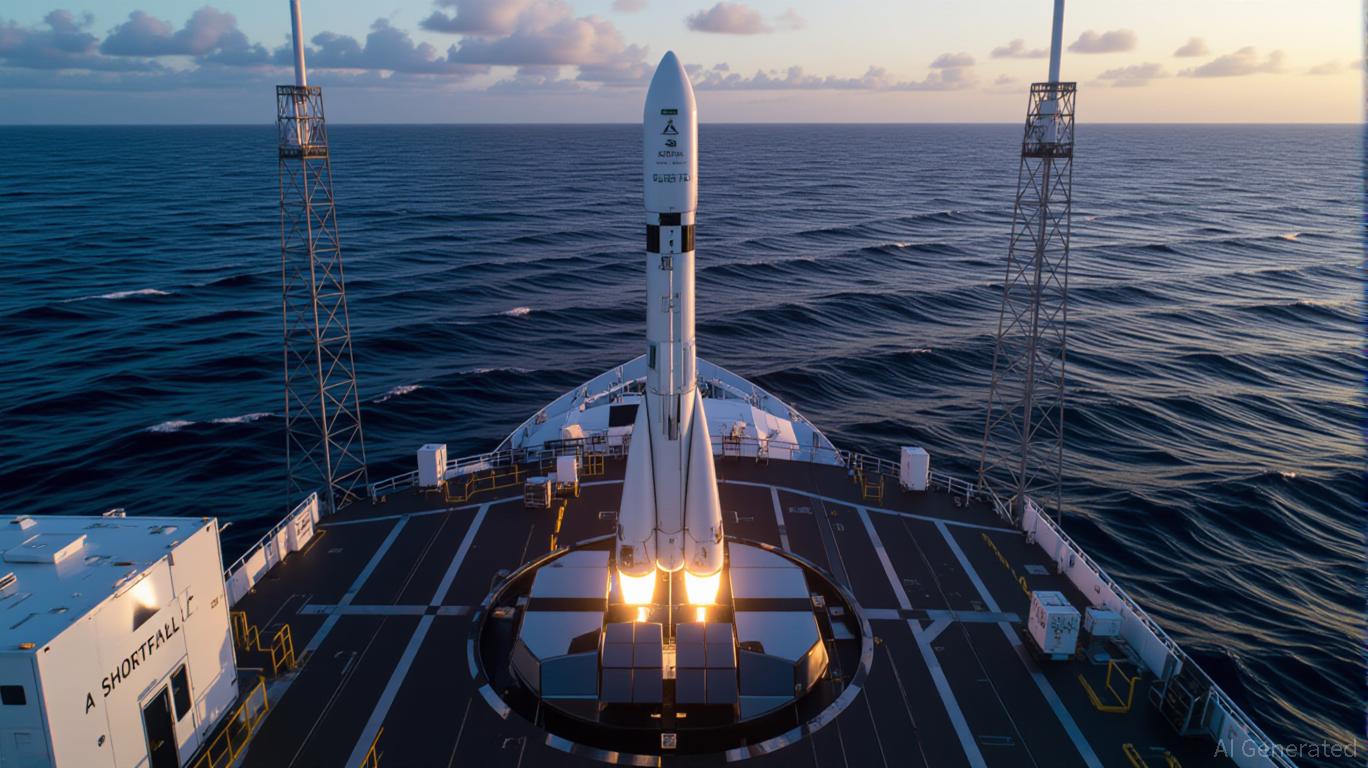
SpaceX’s Falcon 9 rocket has achieved a watershed moment in space history. On August 28, 2025, the first-stage booster B1067 completed its 30th flight and landing, marking the first time any orbital-class rocket has reached this threshold. This milestone is not merely a technical triumph—it is a catalyst for the next industrial revolution, one that redefines the economics of space access and accelerates the commercialization of orbit. For investors, this event signals a tipping point: the global space economy is no longer a speculative frontier but a high-growth, high-conviction sector ripe for strategic positioning.
The Cost Revolution: From Expendable to Reusable
The Falcon 9’s reusability has already slashed launch costs by 70–80% compared to traditional expendable rockets. By reusing boosters up to 30 times, SpaceX amortizes the fixed costs of hardware across multiple missions, reducing the effective cost to orbit to $2,720 per kilogram—a fraction of the $10,000–$25,000 charged by competitors. The B1067 booster alone has saved over $450 million in manufacturing costs since its debut in 2019.
Post-30th reuse, the cost per launch is projected to drop further. Internal estimates suggest that with 100+ flights per booster, the marginal cost could fall to $10–15 million per launch, or $67–100 per kilogram for a 150-ton payload. This creates a flywheel effect: lower costs enable higher launch cadence, which in turn accelerates satellite deployment and infrastructure scaling.
Accelerating Satellite Deployment: The Starlink Effect
The Falcon 9’s reusability has been the backbone of SpaceX’s Starlink project, which now operates over 8,200 satellites and serves 2.3 million customers across 70 countries. The recent 30th reuse milestone directly supports the deployment of Starlink V2 Mini satellites, which are 22% lighter and more cost-effective than their predecessors. With each Falcon 9 mission now capable of launching 28 satellites in a single flight, SpaceX is on track to deploy 1,200 satellites annually, dwarfing the capabilities of competitors like Amazon’s Project Kuiper and OneWeb.
The implications for global connectivity are profound. Starlink’s direct-to-cell and maritime/aviation services are already generating $7.7 billion in 2024 revenue, with projections of $11.8 billion in 2025. By 2026, the constellation’s bandwidth capacity is expected to reach 3,270–5,470 Tbps, supporting up to 50 million customers—a 600% increase from current levels.
Democratizing Access: Startups and Emerging Economies
The Falcon 9’s cost reductions are not confined to SpaceX. They are democratizing access to orbit for startups and emerging economies. With launch costs now accessible to small satellite manufacturers and new space nations, the industry is witnessing a surge in innovation. For example, companies like Rocket Lab and Arianespace are leveraging reusable technology to compete in niche markets, while countries like India and the UAE are accelerating their satellite programs.
This shift is creating a $20 billion satellite manufacturing industry by 2024, driven by demand for small satellites and mega-constellations. The ability to launch 18,500 satellites between 2024 and 2033—many of them produced via production-line techniques—signals a seismic shift in how space infrastructure is built and deployed.
Investor Opportunities: Where to Position Now
For investors, the Falcon 9’s 30th reuse milestone highlights three key areas of opportunity:
Satellite Manufacturing: Companies like Maxar Technologies and Planet Labs are leading the charge in small satellite production. With SpaceX’s V2 Mini satellites setting a new standard for cost efficiency, firms that master high-volume, low-cost manufacturing will dominate. Launch Services: While SpaceX controls 60% of the global commercial launch market, the sector is expanding. Emerging players with reusable technology, such as Blue Origin and ISRO, offer diversification potential. Space-Based Tech Ecosystems: Innovations in on-orbit servicing, debris mitigation, and direct-to-device connectivity are gaining traction. SpaceX’s $500 million investment in debris mitigation and its D2D partnerships with T-Mobile underscore the sector’s potential. The Long Game: A $1.8 Trillion Space Economy by 2035
The Falcon 9’s 30th reuse is not an endpoint but a launchpad. As SpaceX transitions to Starship—a fully reusable system aiming for $10 per kilogram launch costs—the space economy will expand exponentially. By 2035, the sector is projected to reach $1.8 trillion, driven by lunar mining, deep-space exploration, and orbital logistics.
For investors, the message is clear: now is the moment to act. The space infrastructure market is transitioning from a niche sector to a core component of the global economy. Those who align with the principles of cost efficiency, technological innovation, and recurring revenue—principles embodied by SpaceX—will be best positioned to capture the upside.
In conclusion, the Falcon 9’s 30th reuse is more than a technical milestone—it is a harbinger of a new industrial era. For investors, the question is no longer if to invest in space, but how to position for its rapid scaling. The next frontier is here, and the launchpad is already in motion.
